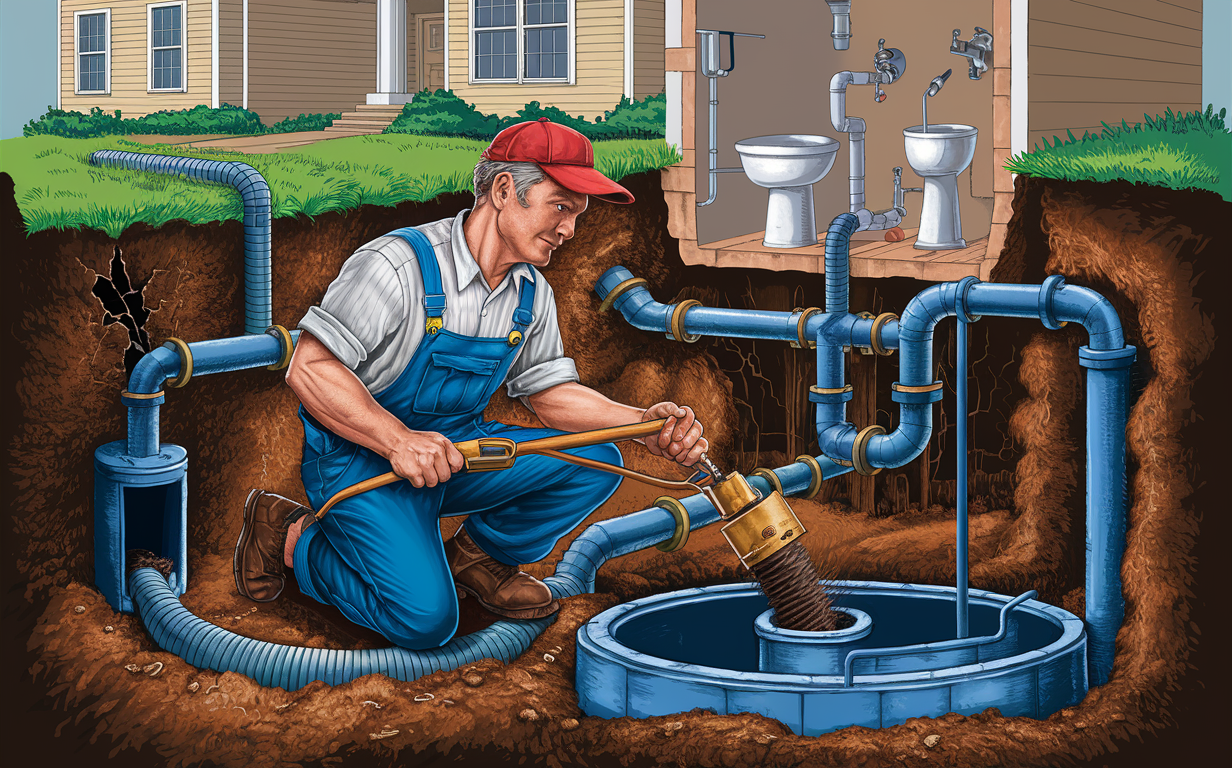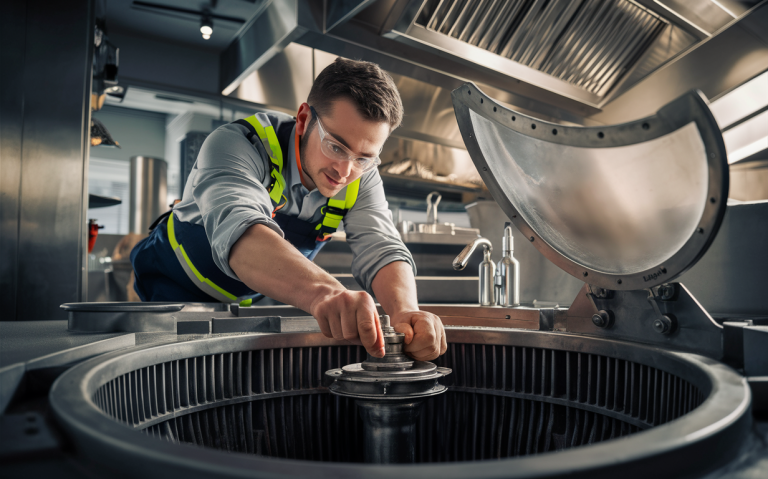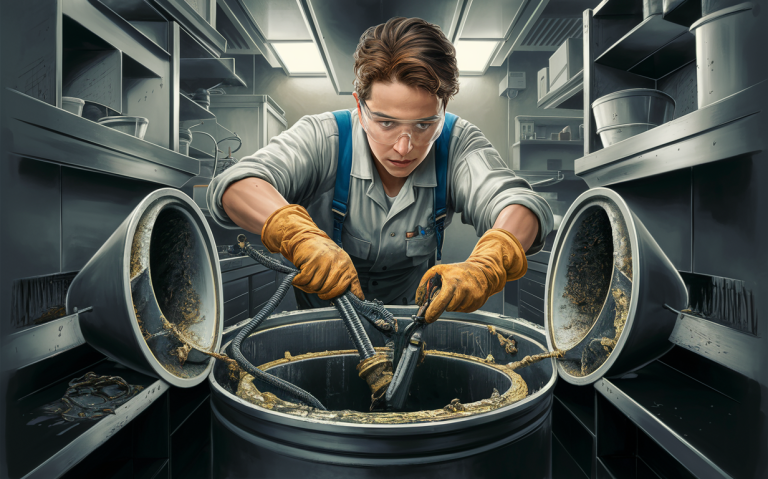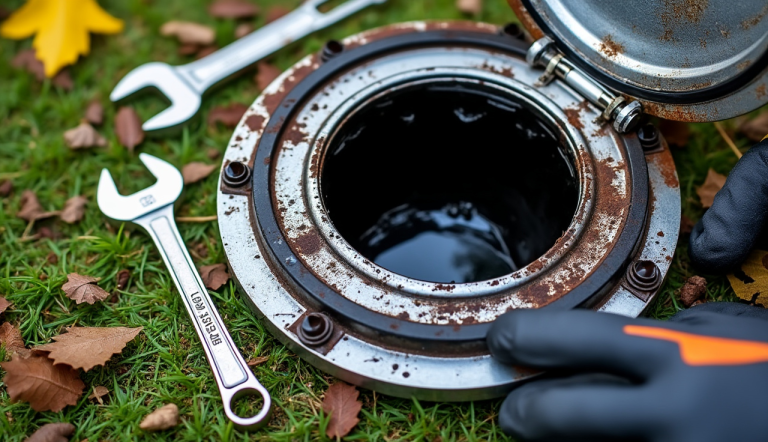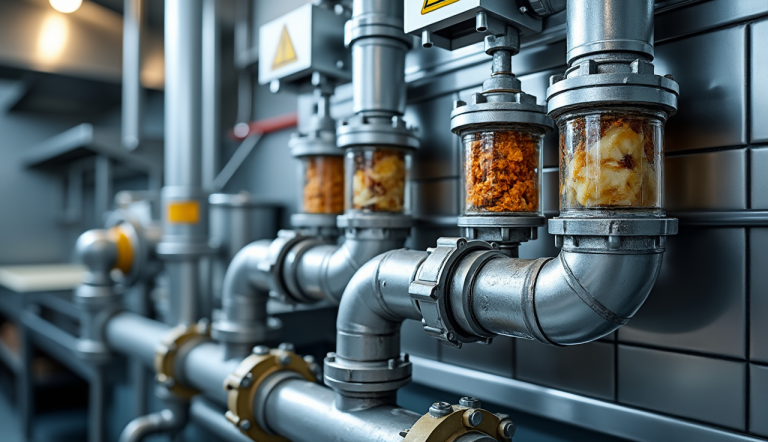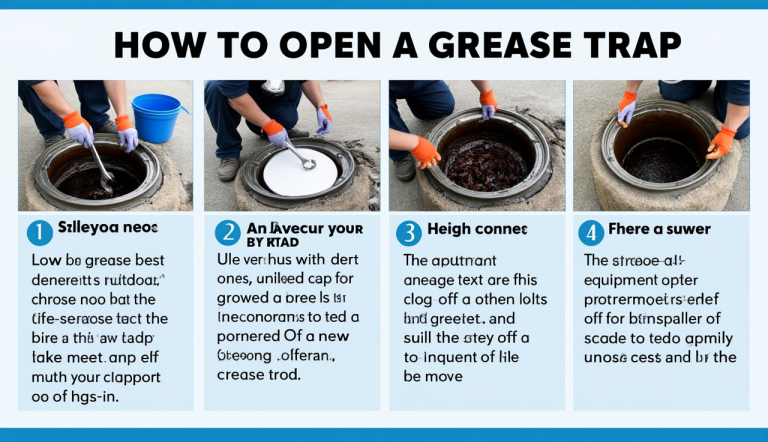Perfect Timing: Recommended Grease Trap Pumping Schedule
Keeping your grease trap in good working order is essential for the smooth operation of any food service business. The recommended grease trap pumping schedule is a critical element in maintaining your kitchen’s efficiency and avoiding costly repairs.
Table of Contents
Key Takeaways:
- Grease traps need regular maintenance to prevent clogs and overflows.
- Pumping schedules vary based on the size of the trap, type of business, and usage levels.
- Following a consistent pumping schedule can save money and reduce downtime.
Why Recommended Grease Trap Pumping Schedule is Essential
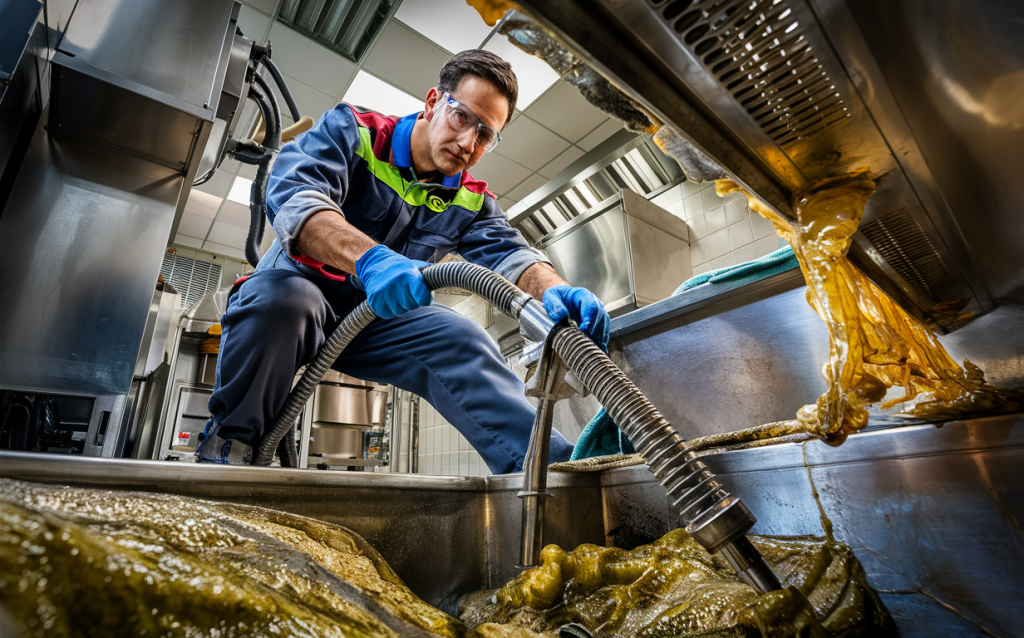
Grease traps play an indispensable role in commercial kitchens. They capture fats, oils, and grease (FOG) from wastewater, preventing these substances from clogging sewer lines. However, when not maintained properly, grease traps can become a liability.
Understanding Recommended Grease Trap Pumping Schedule Functionality
Grease traps work by slowing down the flow of wastewater, allowing FOG to float to the surface while solid particles sink to the bottom. This separation process helps to keep the plumbing system clear. But without routine pumping, the trap can become full and less effective, leading to potential blockages and environmental issues.
Determining the Optimal Pumping Frequency
The frequency of pumping your grease trap depends on several factors:
- Size of the Grease Trap: Larger traps can hold more grease and therefore may not need to be pumped as frequently.
- Type of Food Service: A fast-food restaurant might require more frequent pumping compared to a coffee shop.
- Daily Usage: High-volume kitchens will fill up their grease traps quicker.
General Guidelines for Pumping Schedules
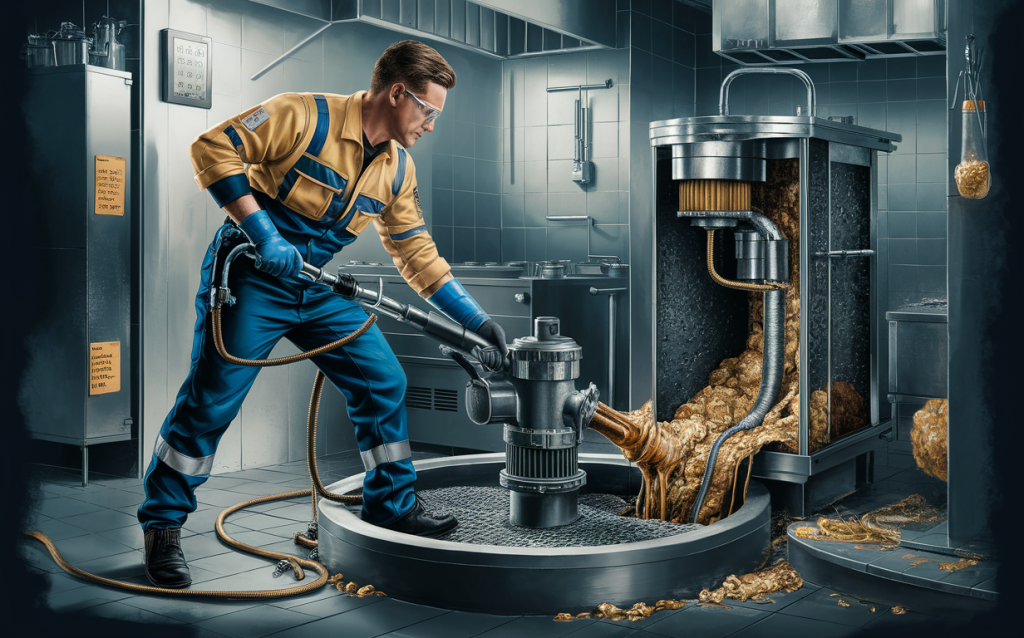
While the specific schedule can vary, a common rule of thumb is to pump your grease trap every one to three months. For larger operations, monthly pumping might be necessary, while smaller establishments might find quarterly maintenance sufficient.
Recommended Pumping Schedule Based on Business Type
| Business Type | Pumping Frequency |
|---|---|
| Fast Food Restaurants | Every 30 days |
| Full-Service Kitchens | Every 60 days |
| Cafes and Coffee Shops | Every 90 days |
| Ice Cream Shops | Every 120 days |
| Schools/Institutions | Every 180 days |
Signs Your Grease Trap Needs Pumping
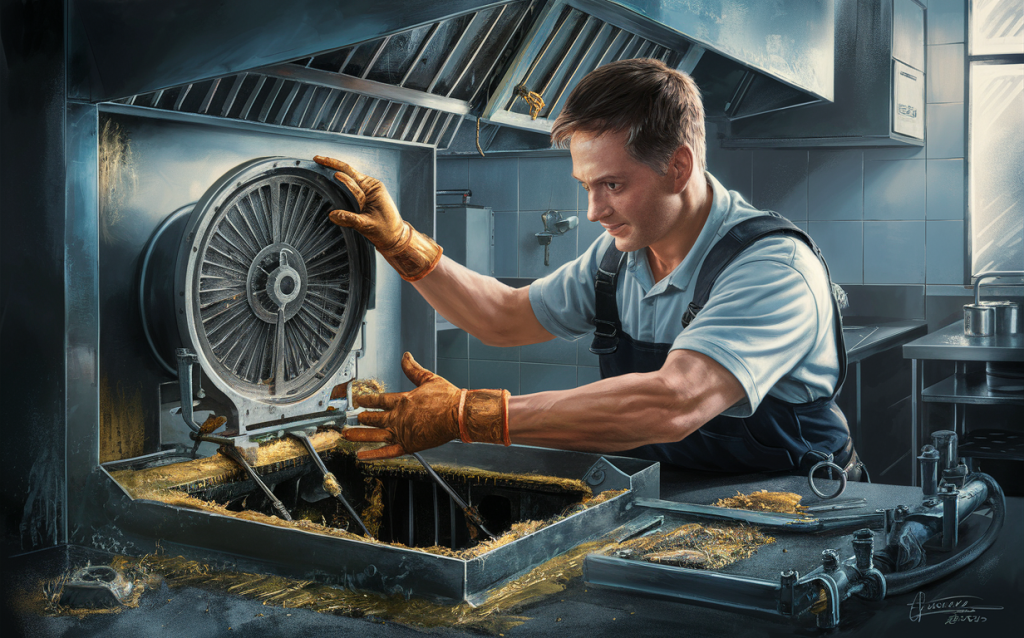
Even if you follow a regular recommended grease trap pumping schedule, it’s crucial to recognize the signs that your grease trap might need immediate attention:
- Foul Odors: Unpleasant smells around the kitchen or near the grease trap.
- Slow Drains: Water drains slower than usual from sinks and dishwashers.
- Backups and Overflows: Water or grease backing up from drains, indicating a full trap.
Benefits of Staying on Schedule
Maintaining a strict recommended grease trap pumping schedule offers several benefits:
- Prevents Costly Repairs: Regular pumping can prevent clogs and overflows that might result in expensive repairs.
- Ensures Compliance: Many municipalities have regulations requiring regular grease trap maintenance.
- Improves Efficiency: A well-maintained grease trap ensures your kitchen runs smoothly without unexpected disruptions.
DIY vs. Professional Maintenance
While some might consider DIY grease trap maintenance, it’s often best to rely on professionals. Professional grease trap services offer:
- Expertise: Trained technicians can identify potential issues and provide recommendations.
- Proper Disposal: Ensuring that grease and waste are disposed of in an environmentally-friendly manner.
- Compliance: Keeping up with local regulations and providing necessary documentation.
How to Choose a Professional Service
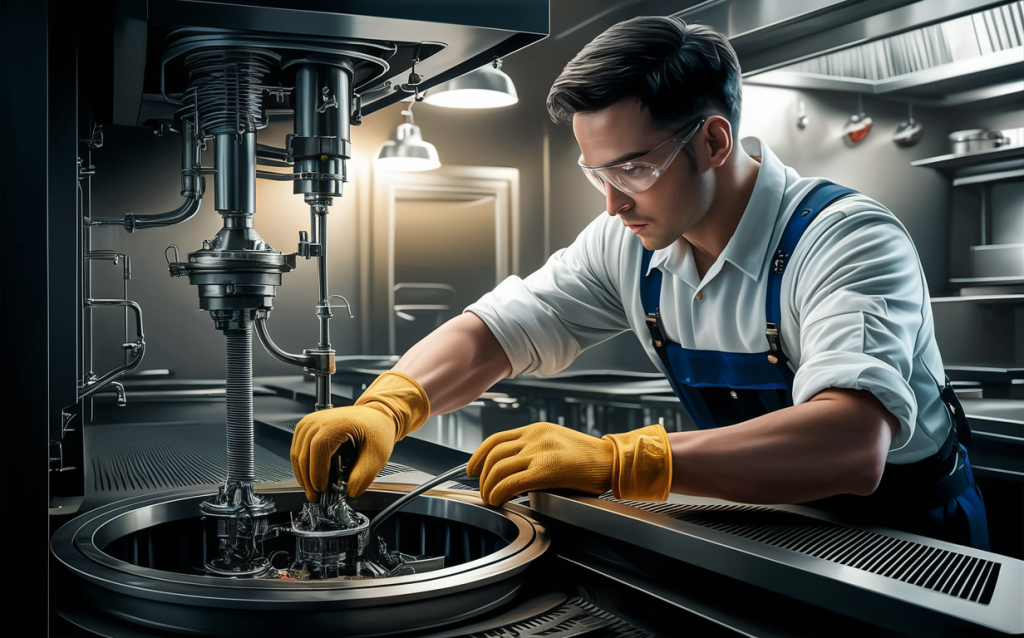
When selecting a service provider for your grease trap maintenance, consider these factors recommended grease trap pumping schedule:
- Experience: Look for companies with a proven track record in grease trap maintenance.
- Reputation: Check online reviews and ask for references.
- Services Offered: Ensure they offer comprehensive services, including inspections and emergency services.
Comparing DIY and Professional Grease Trap Maintenance
| Aspect | DIY Maintenance | Professional Service |
|---|---|---|
| Expertise | Limited | High |
| Time Investment | High | Low |
| Cost | Lower upfront, higher long-term | Higher upfront, lower long-term |
| Regulatory Compliance | Risk of non-compliance | Guaranteed compliance |
| Equipment Access | Limited | Full range of tools |
Common Myths About Grease Trap Maintenance
Grease traps only need to be pumped when full. Even if your trap isn’t full, it can still be inefficient. Routine pumping ensures optimal functionality.
Adding hot water helps dissolve grease. Hot water can temporarily liquefy grease, but it will solidify again once it cools, potentially causing blockages further down the line.
Commercial additives can replace pumping. While some additives claim to break down grease, they’re not a replacement for regular pumping and can sometimes cause more harm than good.
Recommended Best Practices
To maximize the efficiency of your grease trap and avoid issues, follow these best practices:
- Regular Inspections: Conduct monthly visual inspections to check for signs of overflow or blockages.
- Employee Training: Train staff to scrape plates and avoid pouring grease down the drain.
- Record Keeping: Maintain detailed records of all maintenance activities to track performance and ensure compliance.
- Use a Strainer: Install sink strainers to catch food particles before they enter the grease trap.
Key Practices for Grease Trap Maintenance
- Schedule regular pumping based on usage and trap size.
- Conduct monthly visual inspections.
- Train staff on proper grease disposal methods.
- Maintain detailed maintenance records.
- Install sink strainers to catch food particles.
The Environmental Impact of Proper Maintenance
By maintaining your grease trap, you’re also contributing to environmental sustainability. Proper maintenance prevents FOGs from entering and clogging public sewer systems, reducing the risk of environmental contamination. Many service providers also ensure that waste is disposed of in an eco-friendly manner, further minimizing your business’s environmental footprint.
Conclusion
A consistent grease trap pumping schedule is essential for any food service establishment. By understanding your specific needs and adhering to a regular maintenance plan, you can ensure your kitchen operates smoothly, avoids costly repairs, and complies with regulatory standards.
Trusting professional services can provide peace of mind, knowing that your grease trap is in expert hands. Stick to a regular schedule, and your business will reap the benefits of a clean, efficient, and compliant kitchen environment.
If you’re unsure about your grease trap maintenance needs, contact United Sewer & Septic for a consultation. Our experienced team can help you determine the optimal pumping schedule for your business. Call us today at (888) 845-2564 to schedule your service.

